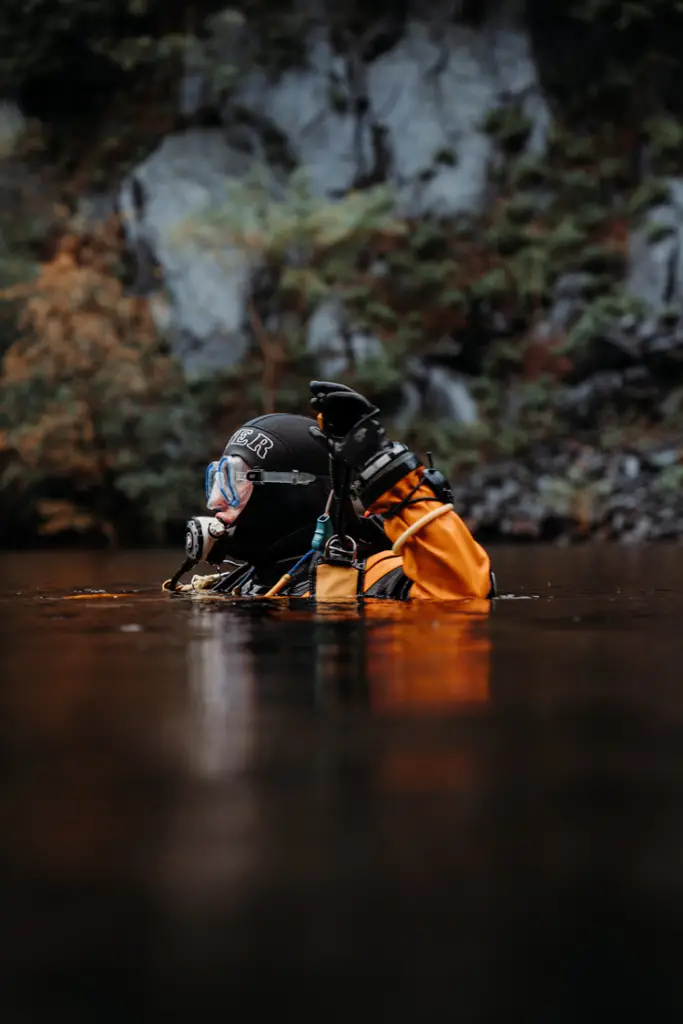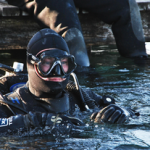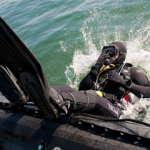
If you are looking to buy your first drysuit, you might be wondering how tight a drysuit should be. You may also ask, can a drysuit be too tight or can it be too loose? Let’s take a look, as it’s important to get it right because drysuits are expensive.
A drysuit should be a snug fit with room for insulation undergarments under it so you can still move freely when you’re wearing it. You should not experience too much restriction on movement with layering under the drysuit, as this would indicate the drysuit is too tight.
The best way to do more diving is to book yourself on a scuba diving liveaboard. You can check the latest and best deals on liveaboards using the following window:
Can a drysuit be too tight?
If your drysuit is too tight it will be uncomfortable to wear. This is no different to wearing any other clothing, but more importantly if a drysuit is too tight, it will restrict your movements. If your drysuit is too tight you may struggle to move your arms or even get kitted up once you’ve put your drysuit on. See below for a drysuit fitting guide.
Can a drysuit not be tight enough?
A drysuit can be too loose or not tight enough, as generally speaking less room in a drysuit is better. A loose-fitting drysuit will mean you have excess suit material, which may get in the way of things. But more importantly, a drysuit that’s not tight enough will contain too much air.
Too much air in a drysuit will create more buoyancy, leading to problems with buoyancy control. You may need to use more weight, which will lead to using up your air more quickly.
Also, if you have too much air in your drysuit, you’ll have difficulty descending on your dive. But then you’ll have more air that can migrate around your drysuit, making it more likely for an inverted drysuit feet-first ascent, which is something you want to avoid at all costs.
A drysuit that isn’t tight enough will have more creases, which will affect you if you get drysuit squeeze. It tends to be the creases in the drysuit that dig-in to your skin when you get drysuit squeeze, and is what makes drysuit squeeze uncomfortable.
Whilst you want to prevent drysuit squeeze in the first place by putting air into your drysuit, you still want to make sure your drysuit is as comfortable as you can.
Finally, the more air in your drysuit, the more air there is to heat and keep warm from your body heat. So keep the ‘loose-space‘ to a minimum, otherwise your new drysuit may not keep you as warm as you’d hoped.
You may like to read this article about what causes drysuit squeeze and how to prevent it, but in a controlled way so as to manage your buoyancy control at the same time. But then you may also be wondering if you need a BCD with a drysuit for buoyancy control.
Or even, you might like to read the arguments both for and against of using your drysuit vs your BCD for buoyancy control. Do you know which is better?
How to decide if a drysuit is tight enough?
When you are trying a drysuit on for size, you should consider the following points:
- When you’ve put the drysuit on move around in it, crouch down and sit down, stretch your arms, touch your elbows to find the tight spots. It’s okay if your elbows don’t meet and if the back of the drysuit is tight at this point. But this will give you a good indication of the movement you will have.
- Take account of what you’ll be wearing under your drysuit. Make sure you try your drysuit on with the thickest undergarments you intend to wear to keep you warm in the water.
- Generally speaking, less room is better in a drysuit, and whilst you may like to have a bit of extra room, keep this to a minimum.
- How tight your drysuit should be is subjective and will be your final decision and what feels comfortable for you.
- Drysuits should last for years (mine is nearly 30 years old and still going strong), so make sure you take your time to get it right.
- If you are very tall, an odd shape or perhaps a little over weight, consider having a made to measure drysuit so it fits like a glove.
- You should be able to get your drysuit on and off without too much of a struggle.
Drysuit fitting guide; A checklist for checking the tightness of a drysuit
- Cross your arms across your chest and touch your opposite shoulders. This means the fit across the back is good and the arms are a good fit.
- Put your arms in the air above your head. This confirms the torso is the right length. If you feel the drysuit is tight in the crotch area with this move, it’s probably too tight. An alternative is to put the drysuit on with the undergarments, squat all the way down and tilt your head forward; If you don’t have a tight seal around the back of your neck, this means your torso is too short.
- Crouch down with your hands touching the floor with your forearms in front of you. This means the back panel is long enough. This is an important movement in a drysuit, not least to remove the air in it before a dive.
- Sitting down on a chair, bring each leg over your knee so it’s crossed over the opposite leg, one at a time. This means the legs are long enough. This is an important test for putting your fins on before a dive.
If you can do all of the above movements with a small amount of resistance, this is a good fit. If you struggle with any of the above movements, this means the drysuit is too small. But if there’s no resistance at all, it might mean the drysuit is too big.

How tight should drysuit seals be?
The drysuit seals, which includes the wrist and neck seals, should not be too tight, but tight enough so these don’t leak. However, neck seals can be too tight, so you might like to read this article about why it’s important not to dive with an excessively tight neck seal.
Final thoughts on how tight should a drysuit be
Take your time when you buy your first drysuit, as a drysuit will last you for many years. For example, my DUI crushed neoprene drysuit is still going strong even after nearly 30-years! It does currently have a small leak that I need to have fixed, and I’ve replaced the neck and wrist seals, but apart from that, the suit is still in great shape.
Try the different types of drysuit, as each type will feel different. I personally prefer the comfort of a crushed neoprene drysuit, but you will need to consider the cost aspects of buying your first drysuit too, and what you can afford.
Finally, when you buy a drysuit, it should be a snug fit with room for insulation under it so you can still move freely when you’re wearing it. You should not experience any restriction on movement with layering under the drysuit if it fits right.
Now you might like to have a read of this article about what drysuit diving is like. How easy or difficult is drysuit diving? Or read about everything you need to know about drysuit diving in one place.
I hope you enjoyed this article about how tight should a drysuit be
I’d love to hear from you. Tell us about your adventures of diving and snorkeling, in the comments below. Please also share your photos. Either from your underwater cameras or videos from your waterproof go-pro’s!
If this article hasn’t answered all of your questions. If you have more questions either about snorkeling or scuba diving (or specifically about how tight should a drysuit be), please comment below with your questions.
There will also be many more articles about scuba and scuba diving safety tips (and on snorkeling too) for you to read and learn about this fabulous sport.
Have fun and be safe!




